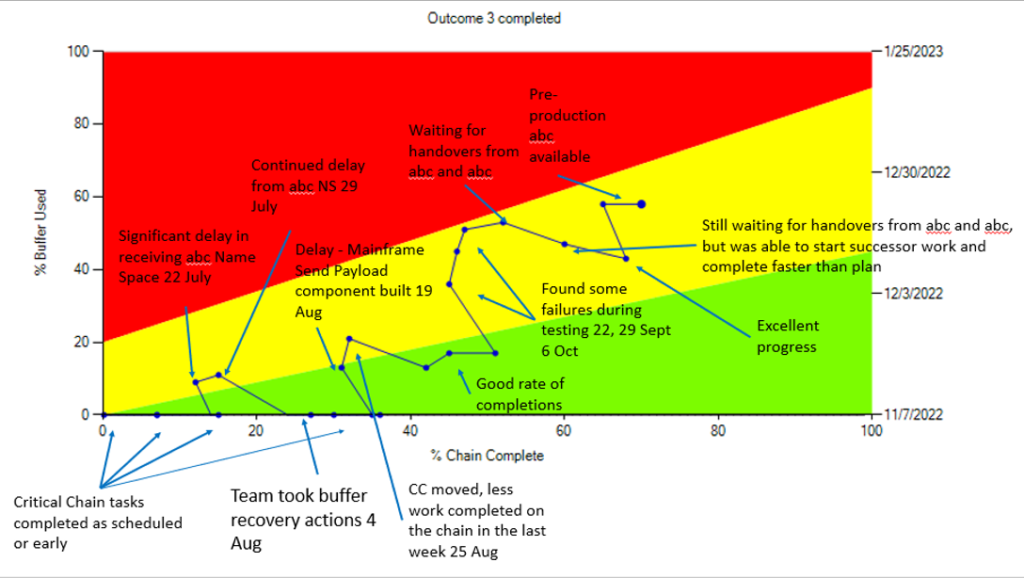When a client calls and their project is running late, they’re often surprised at how we approach the fix. They’ll say things like, ‘the last consulting firm we had in here stopped the project and did a huge re-plan – they assured us that everything would be fine, they’d sort all the project management tools and process, but then months later, the project still ran late!’
We have a very specific way of applying project management tools and thinking to large, late-running projects. Furthermore, we apply the changes in a very specific sequence. By the way, this applies to both Agile and Waterfall-based projects.
Surprisingly, step one in the recovery of a late-running project is not to re-plan. Why? Well, most teams have been through a lot of re-planning and frankly, they know it didn’t get them anywhere. So, the imperative is to give confidence to project leadership and the team that the method of change will actually work. Thus, where we start is task management.
There are two main reasons. The first, is that poor task management is, in most cases, why the project went wrong. Most teams are flooded with tasks, and the de-facto rule is ‘do whatever task you fancy – in whatever order’. The result is essentially multi-tasking on steroids. Mostly, the easier tasks get completed first while the more difficult work is left till last. This results in the project being de-scoped or extra resource is hired to get it back on track.
The second is that with good task management a late-running project can start to recover quickly. Team and leadership confidence increases, and then we can take some time to plan out the rest of the work.
Planning is done differently too; we use two different project management tools for planning, both with a completely different purpose. The first is pert chart or network diagram. This provides a high-level view of the work. It allows the project to be ‘chunked up’ with each large piece of work (around 15-20 days) having been given a good description of what it looks like when it’s done (i.e. what artefacts will be produced). Also, this is where the sequence of the work is sorted out and checks are done here to make sure that no-one has parallel tasks, otherwise, you’re baking multi-tasking into the project management process before you even begin. Oh, and there’s one other big difference, the team that will do the work, also do the planning.
And we insist that leadership are present to give direction on outcomes and clear up issues early. Yes, I know, most leaders don’t want to turn up – hence the reason why many projects run late!
Figure 1 shows an example of a Pert Chart.

We now have our tasks working well and a plan. Note, that we’re not working in sprints but breaking down each large piece of work only as it becomes ready to start. This helps to avoid multi-tasking on a grand and micro-scale.
So, what’s next? Now we’re into measurement. Another very different approach in the project management process. Look, I’ve worked (for my sins) for a big consulting firm… what they lack in methodological approaches they make up for in governance committees. And this is what you’ll see in your project. Layer upon layer of meetings and factories of workers producing slides to tell the leadership that a) their project is on-time (until it’s not anymore, normally – they find this out at the last minute). Or b) if the project is late then it’s because, there’s not enough resource.
I have a teenage son, every night I ask him if he’ll promise to get up in plenty of time for school the next day. He looks me in the eye and says ‘Dad, let me assure you, tomorrow morning will be different’ but without a different habit, routine or in the case of a project, way of working, nothing changes. We have a better approach to measuring projects. First, we assume that all work will have safety built in, and then we put all the safety in a bit pot that, if need be, anyone can take from if they need it. So, there’s a daily report, based on data, that shows every single person in the project if it’s late, by how much, and the exact recovery action to get the project back on track. It looks like this (see below). Can you imagine getting a daily update letting you know exactly what actions to take to recover your project. Everyone says the silver bullet doesn’t exist, well it turns out it does, and you can have it.

Figure 2 – Fever chart showing the exact reasons for a later running project.
If you have a late running project, then there’s two ways we can help you.
- We can have a chat, understand your challenges, and lay out a plan of action. If this is you, and you want to transform your project department now you can arrange a call with myself, or another of our experts by emailing [email protected] or phoning 01234 834510.
- You don’t have immediate need, but you would like your team to understand how to deliver projects early or recover late ones, Goldratt UK are offering a free course to learn the foundations of Critical Chain Project Management. You can register here.
